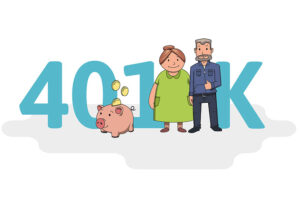Developing tax-saving strategies often require thinking outside the box. One such avenue, especially for those in their golden years, is making charitable donations directly from their Individual Retirement Accounts (IRA) to charities. Deciding to donate to charity from an IRA can not only help a worthy cause but also present potential tax-saving opportunities. As we delve into this topic, we’ll explore the intricacies of this strategy and shed light on how it can align with your broader financial objectives.
Understanding The Charitable IRA Rollover
A charitable IRA rollover, often known as a Qualified Charitable Distribution (QCD), is a direct transfer of funds from your IRA to a qualified charity. This mode of donation is exclusive to IRAs and not available for 401(k)s, 403(b)s, or other retirement accounts.
What makes QCDs particularly attractive is that the distributed amount, up to a specified limit, is excluded from taxable income. This is pivotal, especially for retirees who must take Required Minimum Distributions (RMDs) from their IRA post reaching the age of 72. By opting for a QCD, you can meet your RMD obligation and simultaneously avoid the tax bite on them.
The Intersection Of Philanthropy And Financial Planning
The essence of donating directly from your IRA underscores a broader theme in financial planning—integrating your philanthropic inclinations with tax optimization strategies. This union not only ensures that your chosen charitable organizations receive support but also that your tax liabilities are minimized.
When you donate to charity from your IRA, you’re effectively using pre-tax dollars. This is a marked advantage over taking a distribution, paying the tax, and then donating using post-tax dollars. Furthermore, the QCD amount does not factor into your Adjusted Gross Income (AGI), which can be advantageous for tax purposes.
Eligibility And Limits To Consider
While the idea of QCDs may sound enticing, there are specific criteria and limits to be aware of:
- Age Restrictions: To make a QCD, you must be 70½ or older on the day of the donation.
- Caps on Donations: There’s an annual limit of $100,000 per individual for QCDs. Married couples, if both are eligible, can donate up to $200,000 from their respective IRAs.
- Type of Charities: Only public charities qualify for QCDs. Donor-advised funds, private foundations, and supporting organizations are typically excluded.
- No Double Dipping: It’s essential to ensure that you’re not double-dipping on tax benefits. If you take a tax-free QCD and then attempt to claim it as an itemized charitable donation deduction, you’ll run afoul of the IRS guidelines.
The Mechanics of the Process
To ensure that your charitable donation retains its tax-free status, the funds must be transferred directly from the IRA to the charity. Here’s a simplified outline of the process:
- Choose a Charity: Start by identifying a public charity to which you’d like to make a donation.
- Initiate the Transfer: Contact your IRA custodian and express your intent to make a QCD. They’ll provide guidance on the transfer process, which usually involves filling out a distribution form.
- Direct Transfer: Ensure that the funds are directly transferred to the charity. If you receive the distribution and then donate, the amount will be considered taxable income.
- Obtain Documentation: Always get a written acknowledgment or receipt from the charity. This serves as proof of your donation and will be crucial during tax time.
Potential Ripple Effects on Tax Liabilities
One often overlooked advantages of QCDs is its potential impact on other tax-related aspects:
- Reduced AGI: As the QCD amount is not included in your AGI, it can lead to a lower income level. A reduced AGI can potentially minimize the taxability of Social Security benefits and lower Medicare premiums.
- Standard Deduction Benefits: For those who opt for the standard deduction over itemizing, QCDs offer a way to gain tax benefits from charitable contributions, which wouldn’t have been possible otherwise.
Marrying philanthropic desires with astute financial planning is not just admirable but can also be profoundly advantageous. Opting to donate to charity from your IRA is an embodiment of this philosophy. By embracing such strategies, you can ensure that your hard-earned savings are channelled effectively, benefiting both your chosen causes and your financial landscape.
IRS rules are constantly changing so make sure to a consult with financial or tax professionals to ensure compliance with all regulations and to tailor strategies that best suit your individual circumstances. As the financial world evolves, so do opportunities. Leveraging them effectively can make a world of difference in how you navigate your financial journey.






